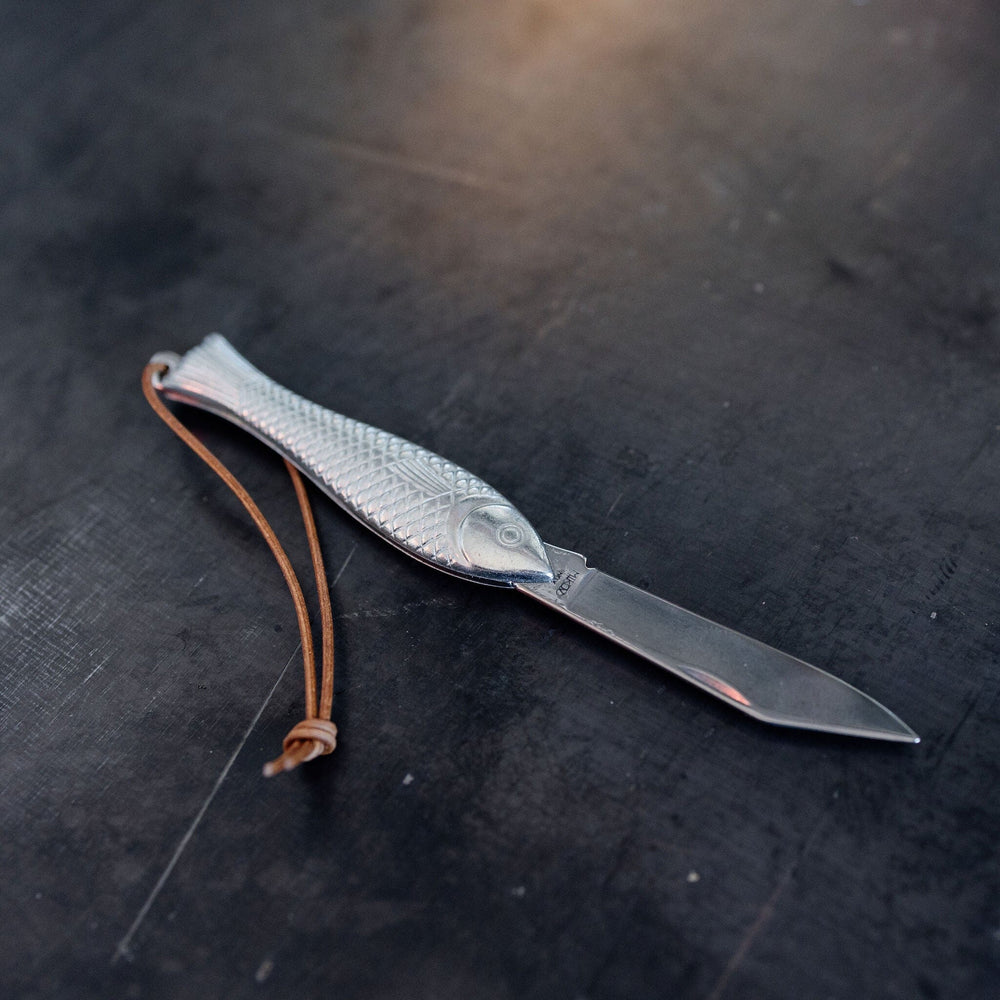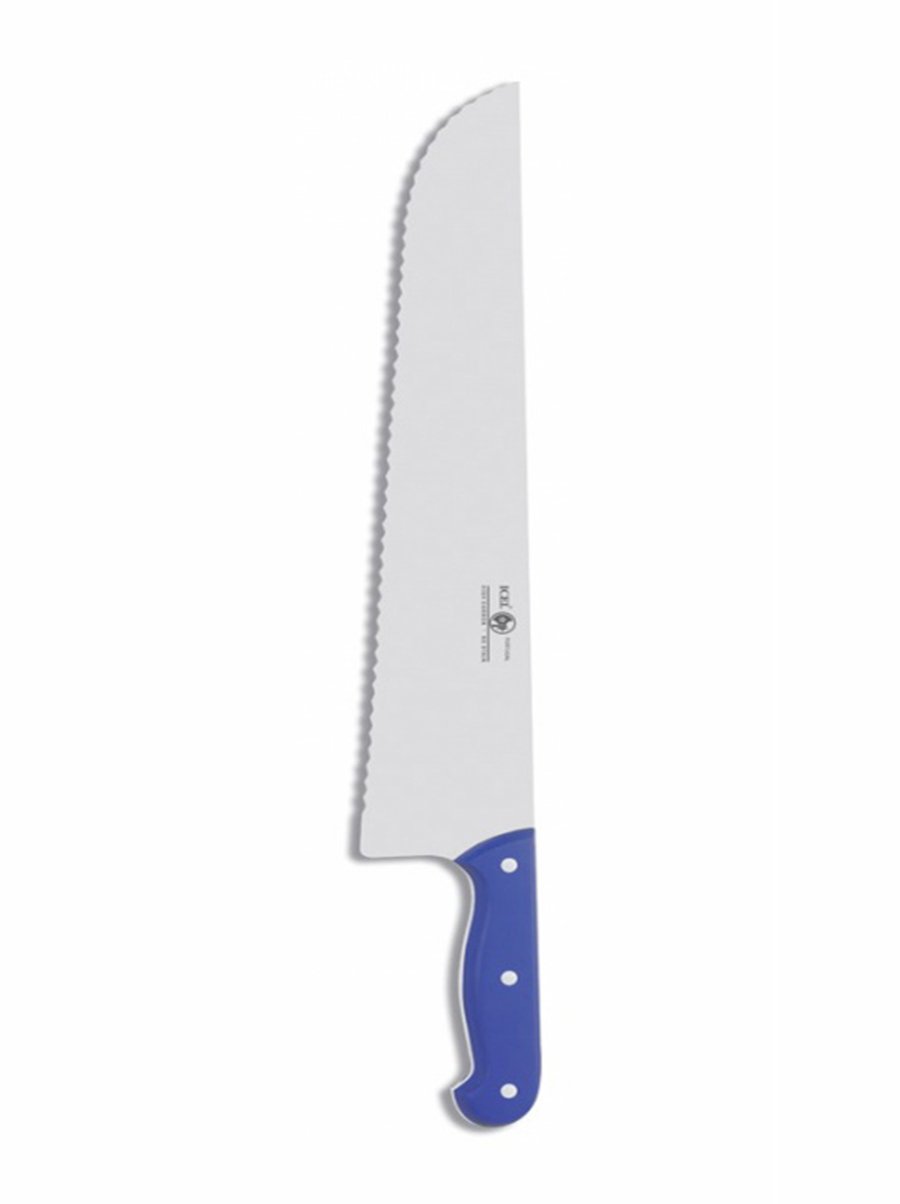The Ultimate Guide to Keeping Your Fish Knife for Durability and Performance
Maintaining a fish knife is crucial for guaranteeing its durability and optimal efficiency. Appropriate care involves a series of steps, consisting of cleansing, sharpening, and storage space. Each phase contributes to the knife's performance during use. Recognizing these methods can make a significant distinction in the lifespan of this vital device. However, several individuals overlook essential elements of upkeep that can cause deterioration. What are these often-forgotten actions?
Choosing the Right Fish Knife for Your Requirements
When picking the optimal fish knife, what key functions should one take into consideration? The blade's versatility is extremely important, enabling accuracy while filleting various fish types (fish knife). A slim, narrow blade commonly boosts maneuverability, making it less complicated to navigate around bones and skin. The material of the blade additionally plays an essential function; stainless-steel offers toughness and corrosion resistance, vital for constant direct exposure to water
Additionally, the manage's layout should not be neglected. It must give a comfortable grip, ideally including non-slip products that ensure safety during use. The knife's size is an additional variable; shorter blades can provide much better control, while longer blades may be helpful for bigger fish. Weight is crucial; a healthy knife allows for prolonged usage without exhaustion. By meticulously thinking about these functions, one can pick a fish knife that satisfies details demands for reliable fish prep work.
Correct Cleansing Techniques After Each Usage
Appropriate cleaning techniques after each use are vital for preserving the longevity and performance of a fish knife. Instantly after filleting fish, it is important to rinse the knife under warm water to get rid of ranges, scum, and any type of residual fish juices. Using a soft sponge or towel, the customer must carefully scrub the blade and deal with, paying special attention to any kind of gaps where debris may gather. Stay clear of using rough materials that could damage the blade's surface area. After washing, the knife should be extensively dried out with a clean towel to avoid moisture-related damages. Applying a food-safe mineral oil occasionally can assist maintain its honesty if the knife has a wooden take care of. Keeping the knife in a designated sheath or magnetic strip can better secure it from unintentional damages and ensure it continues to be tidy and ready for future usage. Consistent adherence to these cleansing practices will certainly improve the knife's life-span and efficiency.
Sharpening Your Fish Knife: Techniques and devices
Honing a fish knife is an essential procedure that enhances its efficiency and ensures clean cuts while filleting. To attain optimal intensity, several tools can be used. A whetstone is considered among one of the most effective approaches, permitting exact control over the developing angle. Users must damp the stone and preserve a regular 20-degree angle while sliding the blade across its surface area.
Alternatively, a developing pole can be utilized for routine upkeep, straightening the blade's side without removing material. For ease, electric sharpeners supply a quick service, though they may not supply the very same degree of finesse as manual techniques.
No matter the picked approach, it is essential to do with a leather strop to polish the side, making sure a lancinating finish. Regular sharpening not only prolongs the life of the fish knife but also enhances the overall efficiency of the filleting process.
Storing Your Fish Knife for Optimal Protection
After sharpening a fish knife, attention must turn to its storage space to keep the blade's honesty and efficiency. Appropriate storage is vital check here for stopping dulling, damage, and rust. Ideally, a fish knife should be saved in a protective sheath or knife roll, which shields the blade from call with various other utensils and ecological elements (fish knife). Magnetic strips can likewise work, enabling accessible and secure storage space while keeping the blade secure

Regular Maintenance Regimens to Adhere To
A consistent maintenance routine is necessary for maintaining the functionality and appearance of a fish knife. Routine cleansing after each use is important; washing the blade with cozy water and light soap gets rid of any residue. It is recommended to dry the knife completely to stop corrosion. Periodically, a light application of food-safe mineral oil can help protect the blade and keep its luster.

Lastly, saving the fish knife in a protective instance or sheath stops accidental damages and keeps it all set for use. Following these upkeep routines will dramatically enhance the long life and effectiveness of the fish knife.
Regularly Asked Questions
Can I Utilize My Fish Knife for Various Other Kinds Of Fish?
Yes, a fish knife can be utilized for various other kinds of fish. The effectiveness may vary depending on the knife's style and the certain fish being refined, influencing efficiency and precision during preparation.
What Materials Are Finest for a Fish Knife Blade?
Stainless-steel and high-carbon steel are pop over to this site considered the very best materials for a fish knife blade. Stainless steel provides rust resistance, while high-carbon steel supplies premium intensity and side retention, essential for efficient fish preparation.
How Frequently Should I Replace My Fish Knife?
A fish knife should usually be replaced every three to five years, depending on usage and upkeep. Normal examination for indicators of wear or damages can additionally assist figure out the ideal time for replacement.
Are There Specific Brand Names Recognized for Top Quality Fish Blades?
Specific brands, like Wüsthof, Victorinox, and Rapala, are renowned for producing high-quality fish blades. These brand names are acknowledged for their sturdiness, sharpness, and ergonomic designs, making them recommended selections among fishing fanatics and specialists alike.
Can Temperature Level Affect My Fish Knife's Efficiency?
Temperature level can considerably affect a fish knife's efficiency. Extreme heat might trigger blade materials to warp, while cool conditions can lead to brittleness. Keeping an optimal temperature level is necessary for protecting the knife's functionality and toughness.
The knife's length is an additional aspect; shorter blades can use much better control, while longer blades may be advantageous for bigger fish. Right away after filleting fish, it is crucial to wash the knife under warm water to get rid of scales, scum, and any type of residual fish juices. After honing a fish knife, attention needs to turn to its storage space to go now maintain the blade's stability and efficiency. Ideally, a fish knife need to be stored in a safety sheath or knife roll, which guards the blade from contact with various other utensils and environmental variables. Yes, a fish knife can be utilized for various other types of fish.